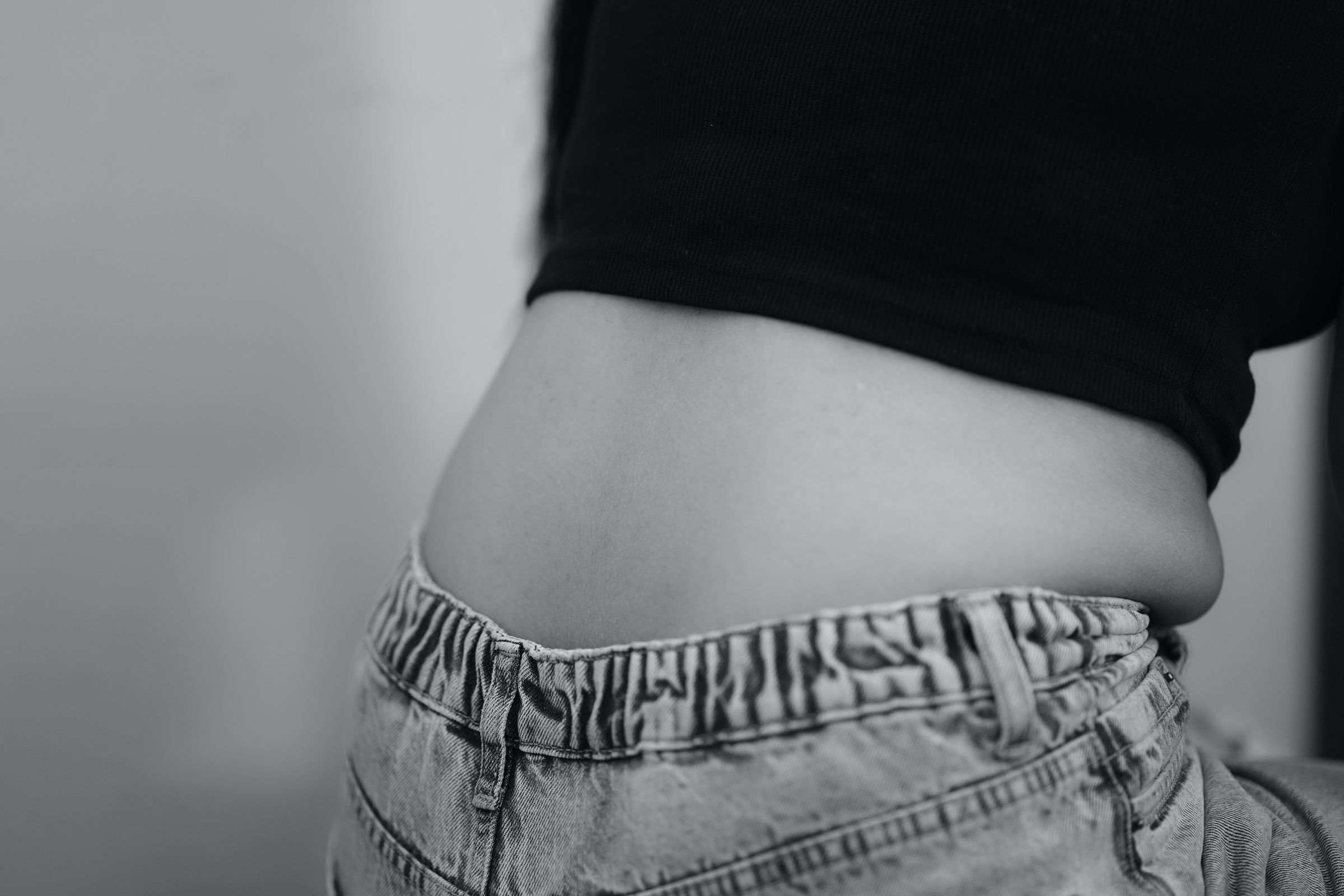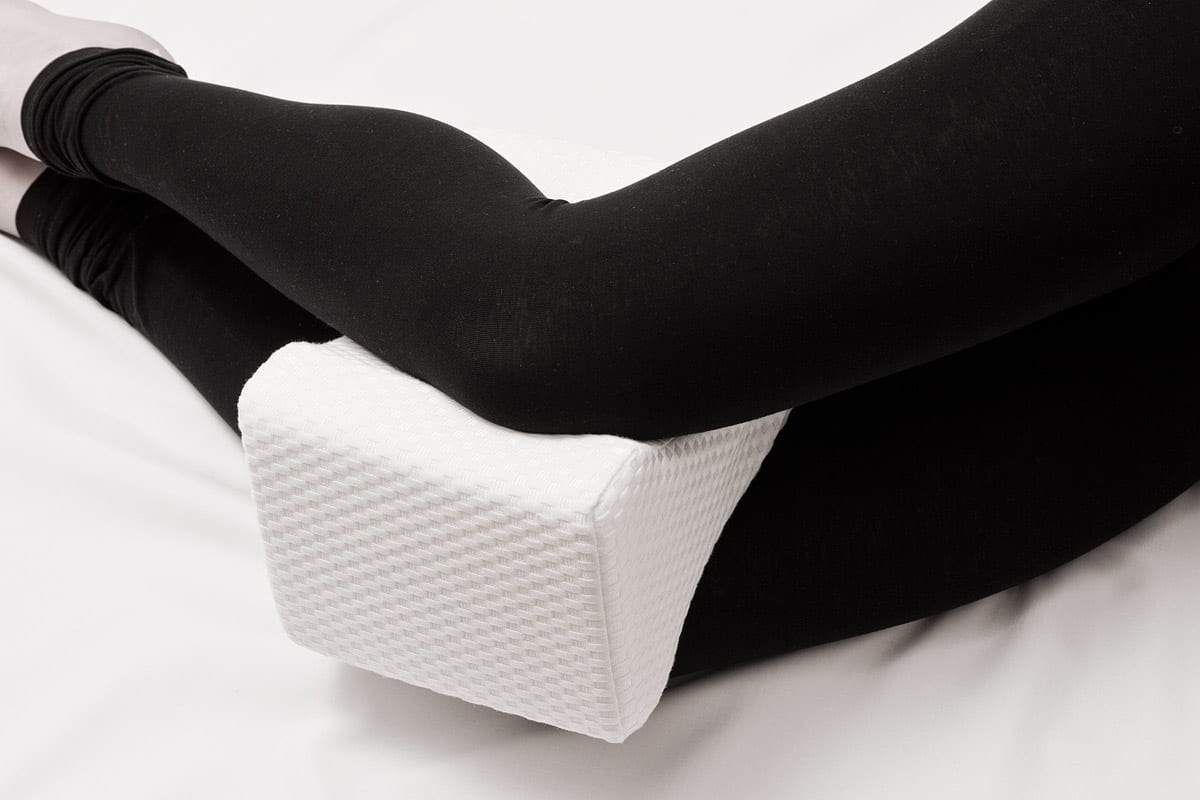How To Choose The Best Pillow For Lower Back Pain
Written by Dr. JoAnn Giesenhaus

Lower back pain is one of the most frustrating ailments to wake up with, especially if it continues into the day. An unaligned spine or bad posture generally causes back pain, and if you’re sleeping or standing in a curved or awkward position, you’re more likely to wake up with annoying aches and pains. It’s frustrating, to say the least.
If your lower back pain is prominent when you wake up, a specialised pillow can reduce pain and sometimes alleviate the problem altogether. This is because a specialised or high-quality pillow offers extra support, less pressure on your spine, and promotes better sleeping posture — but more on this later!
Ready to forget lower back pain altogether? Scroll down to learn more about the best pillow for low back pain and other ways to ease back pain at home.
Connection Between Sleep and Back Pain
One of the leading causes of back pain is a poor sleeping posture or a twisted spine. Your spine and back should be neutral and straight for the best sleep and comfort. But another significant factor can exacerbate lower back pain — a lack of sleep (Vinstrup, Jakobsen and Andersen, 2020).
If you’re experiencing poor sleep or none, your body doesn’t have enough time to rest and restore itself. When we sleep, our bodies create anti-inflammatory compounds. Without these helpful compounds, you’ll likely experience lower back pain, as the inflamed tissue cannot be repaired.
Some studies have even linked long-term sleep deprivation to chronic pain. So, if you’re experiencing lower back pain, a negative feedback loop could occur where you sleep in an awkward position, experience poor sleep quality, and then encounter worse back pain due to lack of rest.
How Pillows Can Impact Back Pain
A good pillow can improve your sleep in all aspects. From offering more spinal support to providing a comfortable environment, choosing a high-quality pillow can help your sleep quality and reduce back pain.
Ensure your pillow maintains a neutral spinal and pelvic alignment to avoid lower back pain.
This way, your spine and back are kept straight, and the chance of back aches decreases. You must also keep your lower body/pelvic area neutral or untwisted to avoid lower back pain. Lower body pillows can help with this sleeping position.
Memory foam and specialised lower body pillows prevent muscle strain by taking the pressure off your body. This gives you a more comfortable night of sleep and a pain-free morning.
A supportive pillow in combination with physical therapy has been proven to reduce lower back pain better than physical therapy alone (Prommanon et al., 2015). So, if you’re experiencing lower back pain, it might be time to experiment with a new pillow.

Choosing the Right Pillow for Lower Back Pain
If you’re experiencing lower back pain, finding a pillow to reduce your discomfort is critical. However, finding the best body pillow for lower back pain can be difficult if you’re new to the issue. Here’s a quick guide for a choosing a new lower back pain pillow.
Factors To Consider When Looking for the Best Pillow for Lower Back Pain
Firstly, you need to know what factors to consider. When choosing a pillow for lower back pain, examine:
The inner and outer materials
Pillow shape
Pillow size
Firmness
Low or high loft
Types of Lower Back Pain Pillows
Pain relieving pillows come in lots of different shapes and sizes. Here are the most effective options to consider.
Memory foam pillows - Memory foam pillows reduce strain and pressure on your neck and spine. These can help with lower back pain, but they’re mainly used for sore necks and upper back pain.
Lower body pillows - Lower body pillows are best for lower back pain relief. These pillows cradle your legs, ensuring your spine and pelvis align comfortably throughout the night. The Groove X Lower Back Pain Relief Pillow takes the pressure off your hips and thighs to ensure your sleeping position is healthy, even if you’re sleeping on your side. The pillow is created from bamboo-infused memory foam and even has antibacterial properties to keep your bed fresh.
Backrest pillows - A backrest pillow comes in a wedge shape to support you while sitting up. This can reduce strain on your back during the day, making it easier to sleep at night. But you’ll also need a pillow for the night to keep your back supported.
Hybrid pillows - A hybrid pillow gives you softness and firm support. This is a popular option for those used to sleeping with down pillows. However, it’s less supportive than memory foam or a lower-body pillow.
Where To Place Pillow for Lower Back Pain
Now, you’ve found the perfect pillow for your lower back pain. But how do you use it?
It’s best to sleep with the pillow under your legs for lower back pain, as this keeps your pelvis aligned overnight. For example, side sleepers should keep the pillow between their knees, whereas back sleepers should keep it under their knees. This way, the back muscles are relaxed, and the spine is straight.
You can do this with a normal pillow, but a specialised lower back pain pillow is easier and more comfortable. Some lower back pillows, even some with ergonomic loop wraps, keep the pillow in place while you dream. Perfect.
Shop The X Knee Pillow Now
What Else Can You Do To Help Ease Back Pain
Adding a high-quality pillow to your routine can relieve lower back pain. Don’t stop there, though. You can also opt for a new mattress that supports your back. For example, memory foam mattresses alleviate pain by taking stress off your body’s pressure points.
You should also try practising good sleep hygiene. Sleep hygiene refers to having healthy habits and behaviours before you go to bed. Bad sleep hygiene can leave you with chronic pains and problems, especially if reinforced for years or decades (www.betterhealth.vic.gov.au, n.d.).
Good sleep hygiene includes:
Waking at the same time every day.
Going to bed when tired.
No screens before bed.
Not working in your bedroom.
It’s also crucial to address your sleeping position. Knowing how to sleep on your side properly can save you from a twisted back or extra lower back pain.

Other Ways to Decrease Lower Back Pain
Interested in other ways to reduce discomfort? Try these other at-home lower back pain remedies to reduce aches and pains.
Stretch every morning - Stretching in the morning should be on everybody’s to-do list. This activity loosens tight muscles and aligns your posture before starting your day. Try some sunrise yoga or simply touching your toes to get started.
Improve your posture - Bad posture is a leading cause of back pain, especially if you spend long hours sitting down. Combat office posture by using an ergonomic chair or a lumbar support pillow.
Strengthen your core - Adding core-strengthening exercises to your routine will improve your posture and spinal alignment and increase muscle strength.
Seek medical advice - If you’re suffering from chronic pain, a trip to the doctor can help you work out if there are any underlying issues.
Final Words
Specialised lower back pain pillows can do wonders for your back health and overall comfort. However, examine the different types of pillows and find the option best suited to your needs. You should also manage lower back pain with other home remedies and good sleep hygiene. You’ll thank yourself when you’re waking up pain-free!
Invest in your sleep and back health today. The Groove X Lower Back Pain Relief Pillow is designed to relieve aches and pains while promoting deep sleep.
Shop The Groove X Knee PillowAbout The Author
Dr. JoAnn Giesenhaus is a dedicated chiropractor with over 20 years of experience, committed to helping people achieve vitality and live life to the fullest.
An expert in Corrective Care Programs, utilising advanced technology like Posture Screen, Sit Screen testing, Motion Study X-Rays, Arthrostim, and Vibracussor for gentle, effective spinal adjustments.
References
- Prommanon, B., Puntumetakul, R., Puengsuwan, P., Chatchawan, U., Kamolrat, T., Rittitod, T. and Yamauchi, J. (2015). Effectiveness of a back care pillow as an adjuvant physical therapy for chronic non-specific low back pain treatment: a randomized controlled trial. Journal of Physical Therapy Science, 27(7), pp.2035–2038. doi:https://doi.org/10.1589/jpts.27.2035.
- Vinstrup, J., Jakobsen, M.D. and Andersen, L.L. (2020). Poor Sleep Is a Risk Factor for Low-Back Pain among Healthcare Workers: Prospective Cohort Study. International Journal of Environmental Research and Public Health, 17(3), p.996. doi:https://doi.org/10.3390/ijerph17030996.
- www.betterhealth.vic.gov.au. (n.d.). Sleep hygiene | betterhealth.vic.gov.au. [online] Available at: https://www.betterhealth.vic.gov.au/health/conditionsandtreatments/sleep-hygiene#:~:text=.

